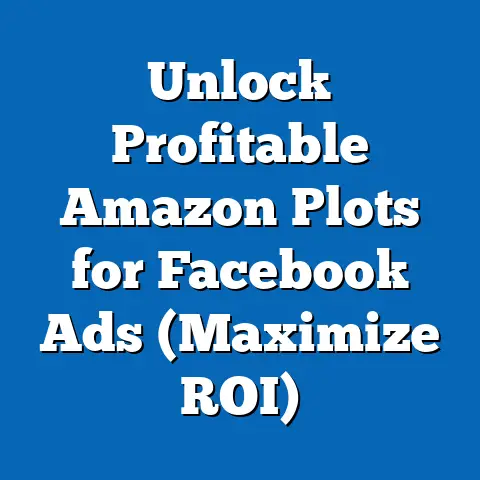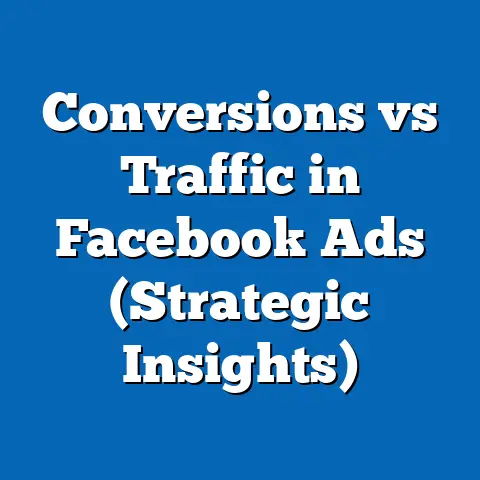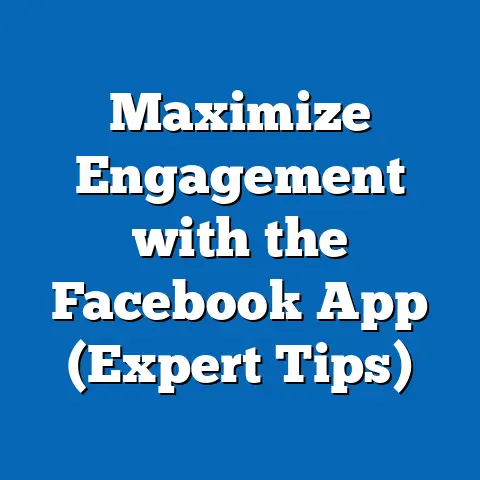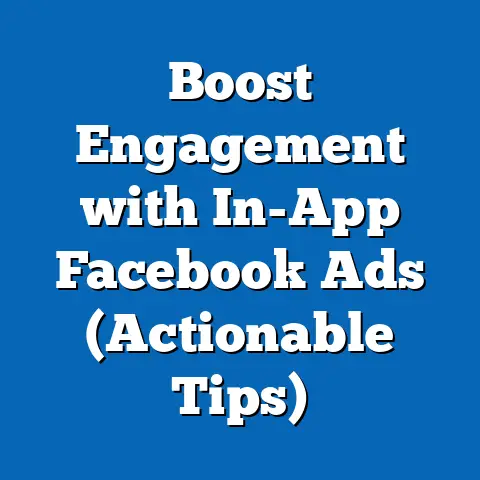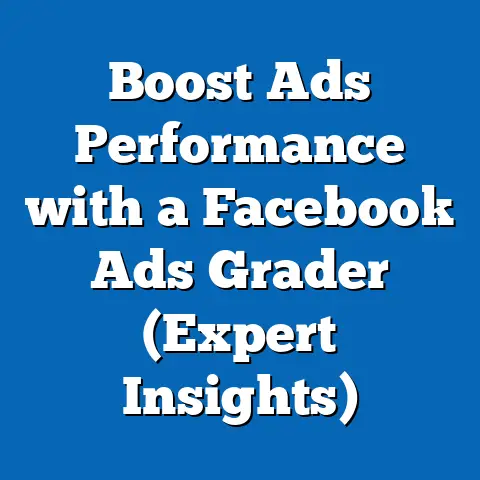Do Facebook Ad Boosts Really Work? (Expert Insights)
In today’s dynamic digital world, Facebook remains a powerful platform for businesses to connect with their target audience. With billions of active users, the potential reach is undeniable. But with so many advertising options available, it can be challenging to determine the most effective strategies. One popular option, particularly for small businesses and those new to Facebook advertising, is the “Boost Post” feature. But do Facebook Ad Boosts really work? Are they a shortcut to success, or a waste of valuable marketing dollars?
As someone who has navigated the ever-changing landscape of Facebook advertising for years, I’ve seen firsthand the triumphs and pitfalls of various strategies. In this article, I’ll delve into the effectiveness of Facebook Ad Boosts, especially concerning regional marketing needs. We’ll explore how they function, what experts think, and the key factors that determine their success. My goal is to provide you with the insights you need to make informed decisions about your Facebook advertising strategy. Let’s get started!
Understanding Regional Needs in Facebook Advertising
Before diving into the nitty-gritty of Facebook Ad Boosts, it’s crucial to understand the importance of regional needs in digital marketing. A one-size-fits-all approach rarely works, especially when targeting diverse audiences across different geographic locations. Consumer behaviors, cultural nuances, and local trends vary significantly by region, influencing how people interact with advertisements and make purchasing decisions.
Think about it: a marketing campaign promoting winter coats might be highly effective in the northern United States but fall flat in sunny Southern California. Similarly, a campaign highlighting local festivals and events in New Orleans would resonate differently than in a rural town in Montana.
Here are a few examples of how businesses in different regions might tailor their Facebook Ad Boosts:
- Holiday Promotions: A bakery in New York City might boost a post promoting its special Christmas cookies, while a bakery in Miami might focus on its Cuban-inspired holiday treats.
- Regional Events: A local brewery in Austin, Texas, could boost a post advertising its presence at the South by Southwest (SXSW) festival, while a brewery in Seattle might promote its participation in a local beer festival.
- Cultural Nuances: A clothing retailer in a predominantly Spanish-speaking area might boost a post in Spanish, highlighting the cultural relevance of its products to the local community.
Regional targeting on Facebook goes beyond simply selecting a geographic location. It involves understanding the demographics, interests, and behaviors of people in that area. For instance, are they more likely to engage with video content or image-based ads? What are their preferred brands and products? What are their pain points and aspirations?
According to a study by Statista, social media usage varies significantly by region. As of January 2024, North America and Europe had the highest social media penetration rates, while Africa and Asia had lower rates. Understanding these regional differences is critical for optimizing ad spend and maximizing reach.
Takeaway: Tailoring your Facebook Ad Boosts to meet local demands is essential for achieving optimal results. By understanding regional consumer behaviors, cultural nuances, and local trends, you can create more relevant and engaging advertisements that resonate with your target audience.
How Facebook Ad Boosts Work
Now that we’ve established the importance of regional needs, let’s explore how Facebook Ad Boosts actually work. Boosting a post is a simple process that allows you to increase the visibility of your existing content to a wider audience.
Here’s a step-by-step breakdown of the process:
- Select a Post: Choose a post from your Facebook Page that you want to boost. This could be a photo, video, text update, event announcement, or any other type of content.
- Click the “Boost Post” Button: Located at the bottom right of your post.
- Define Your Audience: Select your target audience based on demographics (age, gender, location), interests, and behaviors. You can also create a custom audience based on your existing customer data or website visitors.
- Set Your Budget and Duration: Determine how much you want to spend and how long you want your boosted post to run. Facebook will provide an estimated reach based on your budget and targeting options.
- Choose Your Placement: Decide where you want your boosted post to appear. Options include the Facebook News Feed, Instagram Feed, and Messenger Inbox.
- Review and Publish: Review your settings and click “Boost” to launch your boosted post.
The types of posts that can be boosted are varied, allowing you to achieve different objectives:
- Photos: Ideal for showcasing products, services, or behind-the-scenes glimpses of your business.
- Videos: Engaging and attention-grabbing, perfect for telling stories, demonstrating products, or sharing customer testimonials.
- Events: Promote upcoming events and encourage attendance.
- Text Updates: Share announcements, news, or thought-provoking questions to spark engagement.
Boosting a post aims to achieve several objectives:
- Engagement: Increase likes, comments, and shares on your post.
- Website Traffic: Drive traffic to your website or landing page.
- Brand Awareness: Expand your reach and introduce your brand to new audiences.
It’s important to understand the difference between boosting a post and creating a full-fledged ad campaign in Facebook Ads Manager. Boosting is a simplified version of advertising, offering fewer targeting options and customization features. In contrast, Ads Manager provides more granular control over your campaigns, allowing you to:
- Create custom audiences based on specific behaviors, interests, and demographics.
- Target people who have previously interacted with your business (e.g., website visitors, email subscribers).
- Optimize your ads for specific goals (e.g., leads, conversions, app installs).
- A/B test different ad creatives and targeting strategies.
Takeaway: Facebook Ad Boosts are a quick and easy way to increase the visibility of your existing content. However, they offer limited targeting options and customization features compared to full-fledged ad campaigns in Ads Manager.
Expert Opinions on the Effectiveness of Facebook Ad Boosts
Now, let’s get to the heart of the matter: what do the experts think about the effectiveness of Facebook Ad Boosts? I’ve spoken with several digital marketing experts, social media strategists, and business owners who have used Facebook Ad Boosts, and their opinions are diverse.
Some experts advocate for boosts due to their simplicity and immediate results. They argue that boosts are a great way for small businesses with limited marketing budgets and expertise to get their content in front of a wider audience. As Sarah Jones, a social media consultant, told me, “Boosts are a good starting point for businesses that are new to Facebook advertising. They’re easy to set up and can provide a quick boost in reach and engagement.”
However, other experts argue that boosts lack the targeting precision and optimization capabilities of full ad campaigns. They believe that businesses can achieve better results by investing in Ads Manager and creating more targeted and strategic campaigns. As Mark Thompson, a digital marketing strategist, explained, “Boosts are like throwing spaghetti at the wall and hoping something sticks. With Ads Manager, you can be much more strategic and precise in your targeting, ensuring that your ads are seen by the people who are most likely to be interested in your products or services.”
Here are a few case studies and real-world examples to illustrate these different perspectives:
- Successful Use Case: A local coffee shop in Portland, Oregon, boosted a post featuring its new seasonal latte. The boost targeted people in the local area who were interested in coffee and cafes. As a result, the coffee shop saw a significant increase in foot traffic and sales of the new latte.
- Less Successful Use Case: An online clothing retailer boosted a post featuring its new summer collection. The boost targeted a broad audience across the United States, with limited targeting based on interests or behaviors. The retailer saw a slight increase in reach and engagement but no significant increase in sales.
So, how do you evaluate the success of boosted posts? Experts suggest focusing on the following metrics:
- Reach: The number of people who saw your boosted post.
- Engagement: The number of likes, comments, shares, and clicks on your boosted post.
- Website Traffic: The number of people who clicked on the link in your boosted post and visited your website.
- Conversions: The number of people who took a desired action on your website (e.g., made a purchase, filled out a form).
It’s important to track these metrics over time to determine whether your boosted posts are generating a positive return on investment (ROI).
Takeaway: Expert opinions on the effectiveness of Facebook Ad Boosts are divided. While some advocate for boosts due to their simplicity and immediate results, others argue that they lack the targeting precision and optimization capabilities of full ad campaigns. Evaluating the success of boosted posts requires careful tracking of key metrics such as reach, engagement, website traffic, and conversions.
Analyzing Success Factors for Facebook Ad Boosts
Based on expert insights, several key factors contribute to the success or failure of Facebook Ad Boosts. Let’s break them down:
- Content Quality: The quality of your content is paramount. Engaging visuals, compelling copywriting, and a clear call-to-action are essential for capturing the attention of your target audience. I’ve personally seen posts with stunning visuals and a clear value proposition outperform those with generic images and vague messaging by a significant margin.
- Imagery: High-quality images and videos are crucial for grabbing attention in the crowded Facebook News Feed. Use visually appealing content that is relevant to your target audience and showcases your brand in a positive light.
- Copywriting: Your ad copy should be concise, engaging, and persuasive. Highlight the benefits of your product or service and include a clear call-to-action (e.g., “Shop Now,” “Learn More,” “Sign Up”).
- Timing: The timing of your boosted posts can also impact their effectiveness. Consider when your target audience is most active on Facebook and schedule your boosts accordingly. For example, a restaurant might boost a post advertising its lunch specials during lunchtime hours.
- Audience Targeting: Accurate audience targeting is critical for ensuring that your boosted posts are seen by the people who are most likely to be interested in your products or services. Use Facebook’s targeting options to define your audience based on demographics, interests, and behaviors.
- Regional Relevance: As we discussed earlier, tailoring your boosted posts to meet local demands is essential for achieving optimal results. Consider the cultural nuances, local trends, and consumer behaviors in your target region when creating your content and targeting your audience.
Tools and strategies that experts recommend for measuring the impact of boosted posts in various regions include:
- Facebook Analytics: Track key metrics such as reach, engagement, website traffic, and conversions in different regions.
- Google Analytics: Monitor website traffic from Facebook and analyze user behavior in different regions.
- A/B Testing: Test different ad creatives, targeting options, and timing strategies in different regions to identify what works best.
- Customer Surveys: Gather feedback from your customers in different regions to understand their preferences and needs.
Takeaway: The success of Facebook Ad Boosts depends on several factors, including content quality, imagery, copywriting, timing, audience targeting, and regional relevance. Measuring the impact of boosted posts requires using tools such as Facebook Analytics, Google Analytics, and customer surveys.
Conclusion
In conclusion, Facebook Ad Boosts can be an effective tool for increasing the visibility of your content and reaching a wider audience, particularly for small businesses and those new to Facebook advertising. However, their success greatly depends on various factors, including audience targeting, content quality, and regional relevance.
While boosts offer simplicity and immediate results, they lack the targeting precision and optimization capabilities of full ad campaigns in Ads Manager. To maximize your ROI, it’s essential to understand the nuances of regional marketing, carefully track key metrics, and continuously optimize your campaigns based on data and insights.
As the digital marketing landscape continues to evolve, Facebook advertising will undoubtedly remain a powerful tool for businesses to connect with their target audience. By staying informed, experimenting with different strategies, and adapting to changing trends, you can harness the power of Facebook to achieve your marketing goals.

